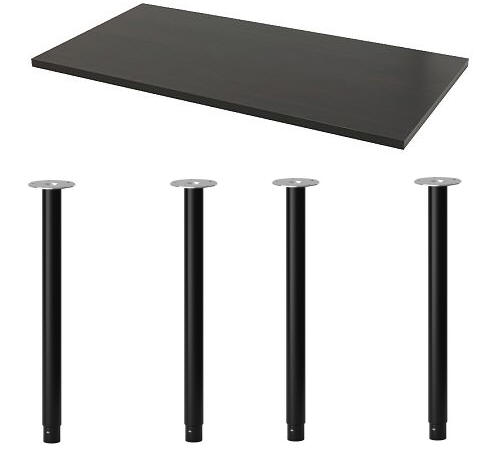Safe computing includes minding your ergonomics
I recently set up a new home office, which not only involved countless trips to Ikea, but also having to deal with ergonomics — something I hadn’t thought much about since the last time I set up an office.
Merriam Webster’s online dictionary defines ergonomics as “a science that deals with designing and arranging things so that people can use them easily and safely.” But like many things in life, it’s really part science and part art. While there are guidelines for such things as keyboard and monitor height, lighting and how you’re seated, it is not a one-size-fits-all proposition.
For example, the proper height of your keyboard or monitor depends not just on your overall height, but on the size of your torso and the length of your legs. The lighting in your office depends on the position of your monitor and even the type of computer you’re using. Even the acoustics matter. A noisy fan can affect your mood, even if you don’t notice it.
Even though I spend a lot of time using my MacBook Air, I’m one of those people who still has a desktop PC. But regardless of whether you use a laptop or a desktop, it’s important to have it at the right height and be sitting in a good chair. Having said that, I admit that I sometimes use my laptop at coffee shops, the kitchen table or even on a couch, where my posture and position is far from optimal. But even when you’re away from your usual work area, and regardless what kind of device you’re using, it’s still a good idea to think about ergonomics.
Most dining room tables and even traditional “writing” desks are too high for the average computer user. For my work area, I set up a desk that’s about 27 inches from the floor because that height seems appropriate for the length of my legs and torso and the position of my chair.
The federal Occupational Safety and Health Administration warns that “when keyboards are too low you may type with your wrists bent up, and when keyboards are too high, you may need to raise your shoulders to elevate your arms.” OSHA recommends that you “adjust the chair height and work surface height to maintain a neutral body posture” and suggests that elbows be “about the same height as the keyboard and hang comfortably to the side of the body,” with shoulders relaxed, and wrists not bent up or down.
It also recommends that you position your computer monitor directly in front of you, and not farther than 35 degrees to the left or right. And don’t squint. If the type is too small, you can adjust it within most programs (Microsoft Office and popular browsers allow you to zoom) or within the operating system.
Rather than buy a desk or computer workstation, I picked out a table top at Ikea along with four adjustable legs that I could position at any height. The legs cost $15 each and the top about $30, so the entire desk (made of fake wood with a rather nice looking veneer) cost about $90. I actually set up two identical desks in an L formation so I have plenty of room for two monitors, my laptop, a printer and the gear I use for my CBS News and KCBS radio broadcasts.
There are plenty of other ways to customize your work area. You could, for example, lay a door over two small filing cabinets, as long as the cabinets aren’t too high. If they’re too low, you can raise the height of the door or table top with pieces of plywood. I noticed that my desk was a little shaky when I typed so I put a matching 25-inch-high cabinet under the desktop and made up the difference using shims (small pieces of plywood) so it now helps support the table top.
Even if you don’t use your home office as a broadcast studio, you might still want to dampen the noise a bit or get rid of any echoes. For that I went to the House of Foam in Palo Alto and bought foam for the walls, which I then covered in decorative cloth that I picked out at FabMo, a Mountain View organization that lets people pick up designer fabric in exchange for a small donation. You can also use a foam mattress (about $20) or hang a rug on the wall.
My office chair has an adjustable seat height and tilt and, because it’s not quite firm enough, I added a lumbar support that helps my lower back.
Of course, equipment is only part of the solution. It’s also important to sit up straight, not slouch and be aware of your posture when you’re using a laptop or tablet away from your desk. And if you search for “cellphone ergonomics,” you’ll also get advice on how to use a cellphone without straining your neck.
My parents gave me good advice by telling me to watch my posture and sit up straight. But back then they couldn’t have anticipated how our work would shift from those old writing desks in today’s on-the-move technology-immersed work styles.
